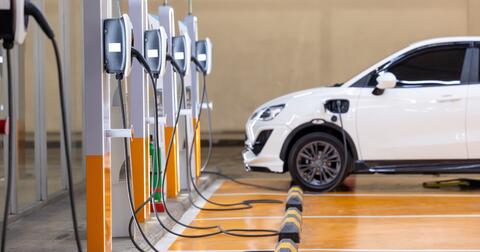Fast EV adoption will shrink Michigan’s population
The quicker the transition, the deeper the job and population loss will be, says U-M forecast
The quicker America adopts the electric vehicle, the deeper the job losses in Southeast Michigan will be, and those job losses will cause people to leave Michigan, says a University of Michigan forecast.
In March 2023 the Southeast Michigan Council of Governments, or SEMCOG, published “The Economic and Demographic Outlook for Southeast Michigan through 2050: A Baseline and Four Alternative Scenarios.” It was prepared by the University of Michigan Research Seminar in Quantitative Economics, which also produces economic forecasts for the state of Michigan and the city of Detroit.
In one scenario, America is slow to embrace the EV. Its market share reaches 9% by 2025 and 24% by 2030. By 2050 all new vehicle sales will be electric. (In all scenarios offered in the report, the economists anticipate no new gas engine sales by 2050.)
“The relatively slow adoption of EVs that we anticipate means that they will have a relatively minor impact on employment in retail trade and motor vehicle repair and maintenance services until the end of this decade,” the forecast explains. “In fact, the introduction of EVs will initially help to sustain employment in motor vehicle manufacturing facilities.”
But over time, head counts in the auto industry in America will fall, from about 965,000 people in 2023 to about 812,000 in 2050, a decline of 16%.
If EV adoption goes faster and 100% of new sales after 2040 are EVs, “the job loss in motor vehicle and parts manufacturing would occur sooner and be larger than we have forecast,” the report says.
If Southeast Michigan retained its market share during a fast EV transition, “employment in motor vehicles, bodies, and parts manufacturing in the U.S. would decline by 30 percent in 2050 relative to 2019,” the forecast reads. “In this scenario, total U.S. industry employment comes to 700,840 jobs in 2050.”
In that scenario, Southeast Michigan would lose 113,000 people, compared to the 2050 baseline estimate.
Assuming a fast adoption of EVs and Big Three companies losing market share, auto jobs in Southeast Michigan would decline by half between 2019 and 2050, from about 113,000 to 55,000.
In this scenario, the population of Southeast Michigan would decline by roughly 332,000 by 2050 — and be smaller in 2050 than it was in 2020. Rather than grow to 5.1 million people by 2050, the baseline estimate, its population would contract to 4.8 million.
Assuming anything other than a moderate growth in EV adoption, Southeast Michigan would come out smaller for it.
“We forecast Michigan’s employment in motor vehicle manufacturing to decline by 2050 due to EV’s lower labor requirements,” the forecast reads. “How soon and how much will be determined by how quickly the industry shifts to electric vehicles and how successfully the Detroit Three automakers make the switch. If the transition to electric vehicles happens more quickly than we project, the region can expect much slower employment and population growth. If Southeast Michigan also loses market share to other states, the region could struggle to achieve any employment or population growth at all through 2050.”
In Lansing and Washington, meanwhile, politicians are pushing for a fast-as-possible transition to the electric vehicle. Gov. Gretchen Whitmer believes Michigan needs the infrastructure for 2 million EVs by 2030, while federal officials believe America could have 30 to 42 million EVs on the road by 2030.
President Joe Biden’s 2021 infrastructure law provides $30 billion of funding for the electric vehicle. Some of the money is used to build out chargers. Some of the money is used to buy electric school and municipal buses. Some of the money grants rebates to people who buy electric vehicles.
Michigan Capitol Confidential is the news source produced by the Mackinac Center for Public Policy. Michigan Capitol Confidential reports with a free-market news perspective.

